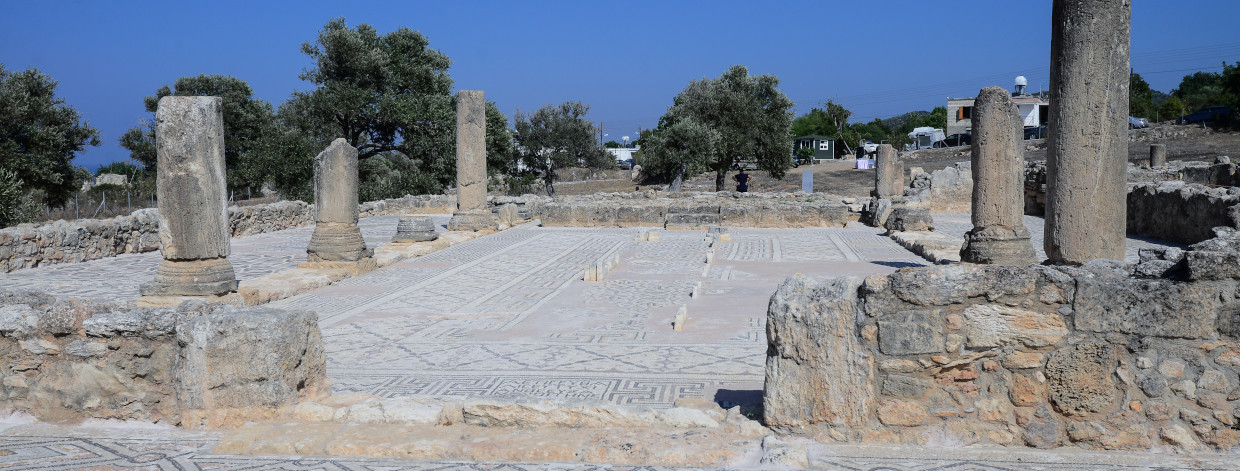Start Date: May 2018
End Date: November 2018
Type of Intervention: Conservation works
Total Project Cost: Approx. €177,000
ABOUT THE ARCHAEOLOGICAL SITE
The ancient city of Karpasia, which gave its name to the whole peninsula, lies 3.5km north-east of the village of Rizokarpaso/Dipkarpaz. Only a limited part of the city has been unearthed by the archaeological excavations which started in 1935 and continued until 1938. The area around the Byzantine church of Agios Philon (12th Century A.D.) has been excavated revealing part of the early Christian episcopal complex (Sth Century A.D.) and earlier structures which date back to the Hellenistic and Roman period (4th Century BC- 4th Century AD). Today, the visible remains of the archaeological site are the early Christian episcopal complex with the basilica, the narthex, the atria, the baptistery and many ancillary spaces. The colonnaded basilica with galleries and a wooden roof was preceded to the west by a narthex and an atrium, now lost in the sea. In the southerm wall of the basilica, a door gave access to the baptismal complex. The baptismal complex is a free-standing rectangular structure consisting of different chambers: a rectangular room with an apse to its eastern side and four smaller rooms along the southern side (the second from the east was provided with the cruciform-shaped baptismal font). The floor of the basilica and of the baptismal complex has a magnificent decoration in opus sectile, while other rooms are paved with slabs of schist marmara (Cypriot marble) and limestone. The now ruinous domed pier cross-in-square church of Agios Philon was built in good ashlar masonry over the nave and the south aisle of the early Christian basilica in the 12th century A.D.
A multidisciplinary team comprised of specialist professionals such as archaeologists, architects, civil engineers and conservators, has designed the conservation project based on the idea that minimum interventions could provide the maximum conservation, consolidation and protection of the site.
